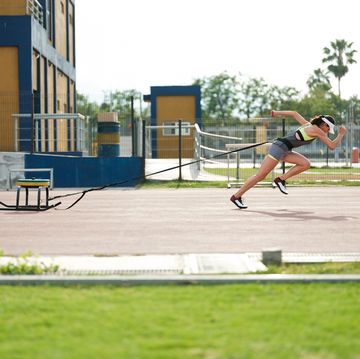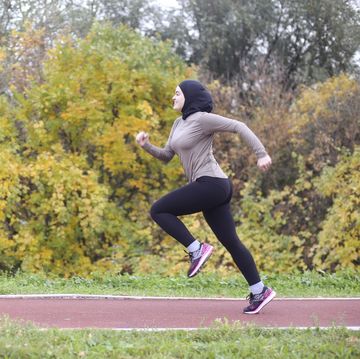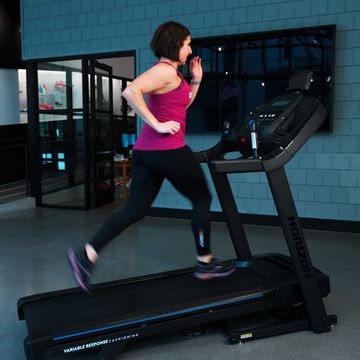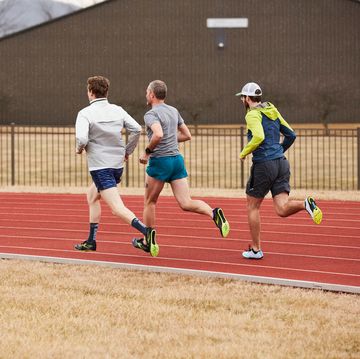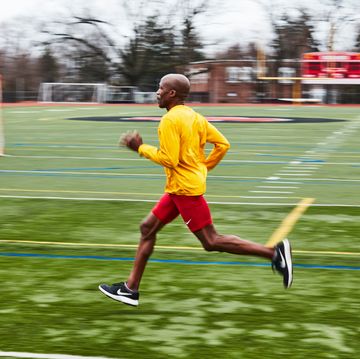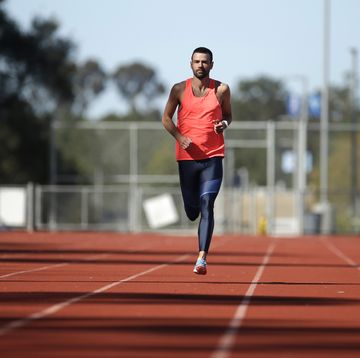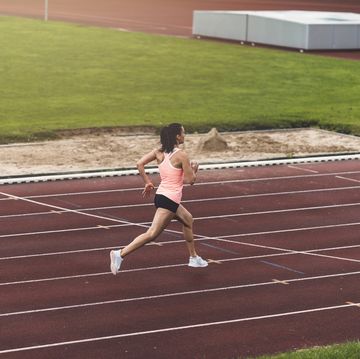Should you jog, walk, or stand still during your recovery between reps in an interval workout? It's a longstanding debate, and I don't think it will surprise anyone to hear that the "right" answer depends on the circumstances and the goals of the workout. Still, there are some interesting insights in a new study just published in the Journal of Strength and Conditioning Research by researchers from St. Mary's University in Britain. The lead author of the study, James Brown, describes the study in detail in an interesting interview over on the Swimming Science blog (which was pointed out to me by Trent Stellingwerff, an essential sports science follow on Twitter).
Without getting too bogged down in the minutiae of the protocol (you can read the abstract here if you're interested), the study varied two parameters in the recovery between intervals (on a stationary bike):
(1) length: the recovery was either short (45 seconds) or long (3 minutes);
(2) active vs. passive: the cyclists either did nothing or cycled at 70% of power at lactate threshold.
The key finding was as follows: with the short recovery, passive rest produced better performance in subsequent intervals; with the long recovery, active rest produced better performance in subsequent intervals. What's going on? For starters, take a look at heart rate during the recovery periods (this is from the long rest session):
There's no doubt that passive rest allows your heart rate to get lower, and that effect is evident more or less immediately. In the 45-second recovery period, the heart-rate difference was statistically significant by 25 seconds. On the other hand, take a look at the lactate data:
Now, let me start by saying that lactate itself isn't necessarily a bad thing. It doesn't "cause" fatigue, but it can serve as a proxy for other metabolites -- hydrogen ions is one example Brown mentions in the interview -- that do limit performance. One of the arguments in favor of active recovery is that it keeps more blood flowing, both because your heart is beating faster (as shown above) and because of the mechanical pumping effect of muscle contraction (e.g. in the calves). This helps clear lactate (and other metabolites) from the bloodstream more quickly. But as the graph above shows, there's no measurable difference in lactate levels (under the particular conditions in this experiment) until 135 seconds into the recovery period. So if you're doing a workout with 60-second recoveries, you're not getting any performance benefits from additional lactate clearance because your heart rate doesn't have time to drop enough to matter.
So what are the practical implications? In broad strokes, the results suggest that short recoveries should be passive and long recoveries should be active -- but it's important not to overgeneralize or to forget what the actual goal of the workout is. As Brown says in the interview:
It is important to realize that the present study refers to optimizing acute recovery with respect to the performance of subsequent sprints in the same training session. Consequently, our findings would only really be of use if the coach’s objective were to optimize power output in each successive sprint. If that were the case, then passive rest would most likely be advisable during such short rest periods. However, if the coach is seeking to maximize aerobic contribution, for example in an aerobic power session, then an active recovery strategy may enhance the training effect even though it would reduce the actual performance of the sprints.
This is obvious if you think about a workout like the famous Oregon 30-40 drill, where you alternate between hard 200s in 30 seconds and easy(ish) 200s in 40 seconds. Clearly you could run the hard 200s faster if you stopped and walked for 40 seconds between them instead of continuing to run -- but that's not the goal of the workout. Even though the recovery is short, this particular workout is intended to be an aerobic challenge, so you jog/run the rest. For other short-rest workouts, the "right" choice may be less obvious depending on exactly what you're hoping to emphasize in the workout -- but one unambiguous finding is that if you're taking more than ~2:00 rest, a little jogging will likely help you run faster on the next rep.
***
Read the Sweat Science book, and follow the latest posts via Twitter, Facebook, or RSS. Also, I'll be speaking about new approaches to recovery as part of the Evolution of the Athlete webinar series (along with Tim Noakes, Dave Martin, and many others) in October; details here.






